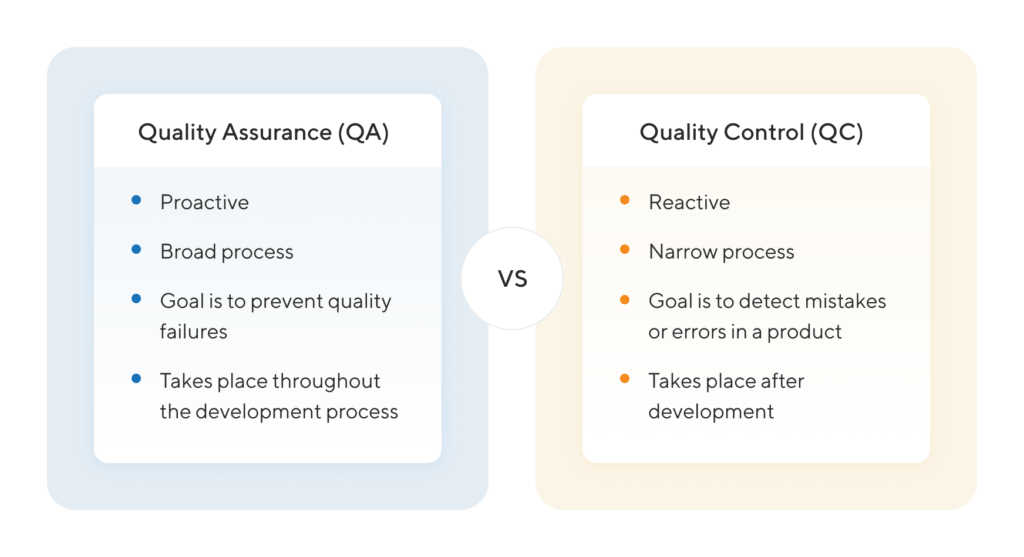It is common to think that the terms quality control and quality assurance mean the same thing, most especially because they are used interchangeably. This article intends to help you differentiate between both terms and the important role they play in the importation/ supply chain process.
Quality Assurance
Quality Assurance is a detailed process that aims to vet product production before manufacturing products. It helps to avoid mistakes and defects in manufactured items. It involves setting standards and requirements for production that guide the production process , ensuring the production of reliable products. In order and build a company’s credibility, companies carry out quality assurance. The ISO 9000 regulates quality management systems under which quality assurance falls.
Quality Control
This is a detailed method of inspection done when production starts, so as to determine the extent to which manufactured products meet their predetermined requirements. Quality control helps to detect defective or poorly produced products and to ensure those bad quality items do not get to a customer. It is similar to quality assurance, but both are not identical.
Quality Assurance (QA) vs Quality Control (QC)
While quality assurance and quality control are generally similar, they are distinct in form and process. Quality assurance is a proactive process that attempts to prevent product defects; while quality control is a reactive process that aims to correct product defects. They help to diminish the probability of product defects.

Quality assurance sets standards for production activities and ensures they are thoroughly followed and it is usually done over some time. The other involves inspection that takes place after the production process has begun, or ended. Quality control comes after quality assurance because one must exist for the other to work. Sourcing agents have the autonomy to work independently, whereas sourcing companies with with teams of sourcing agents, logistics partners, and so on and will have access to a larger database and more resources than most sourcing companies have.
Quality control methods
Inspection : Inspection is the most common method of quality control. It generally involves assessing an item’s quality to prevents companies from selling defective products. It can occur at each step of production to filter defective products. Two major types of inspection are 100% inspection and sampling inspection.
100% inspection: This involves a thorough assessment of all items of a particular product. It involves checking for appearance, craftsmanship, and packaging, to name a few. Inspection ensures accuracy in the production process and reduces the chances of bad products reaching a client. It is generally done for valuable goods and products that tend to develop faults in the production process. This type of inspection cannot be done for specific products and has a downside of increased cost that will go into examining every single item.
Sampling Inspection: Another name for this is partial inspection. It involves testing only a selected amount of products . This then determines corrections for all units or can bring about the rejection of all units. It is a cost-effective process for many organizations, especially when they are manufacturing a large amount of products.
Testing
Testing is a lot like sampling but it is a bit specific to some products. It involves trying out products to see how well they work, or doing lab tests to ensure that they aren’t harmful. This ensures that safe products get to clients.
Statistical quality control
This method of quality control uses statistical metrics such as sampling and probability to uphold quality standards. Statistical deduction is for quality assurance in industries that deal with large manufacturing or continuous operations.
Benefits of QC
- Increased customer rate: When people buy good products from a company, there is an increased chance of more people buying that product. Quality always attracts people.
- Product safety: Quality control makes sure that hazardous products do not get to customers and ensures product safety.
- The loyalty of customers: Consistently good products will result in consistently purchasing customers
- Builds reliability and positive branding for a company
Conclusion
Quality assurance and quality control are an inevitable part of the supply chain process . A detailed set of processes that require a level of knowledge and expertise. If you would like to know more about the manufacturing process and you need some help with quality control, contact us. We will be happy to assist you.

